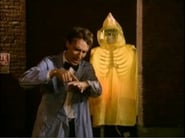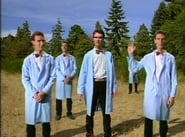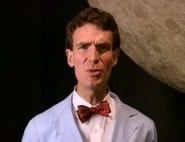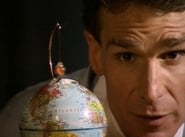
Overview
Let the moon master Bill Nye teach you the ancient and not-so-ancient secrets of the Moon. Wax on, wax off. The Moon grows bigger (waxes) and smaller (wanes) every 30 days or so. The word ""month"" comes from the word ""moon"". The Moon is the closest thing in space to Earth, and it's one of the most well-studied orbs in our solar system. We know that Moon rocks are rich in calcium and aluminum, that the Moon has no atmosphere, and that there are over a million craters on the Moon's surface. The Moon doesn't glow on its own, it reflects sunlight. Watch the Moon every night for a month as it grows, shrinks, and at one point disappears. The Moon doesn't actually change it's shape. It's the way the sun shines on the part of the Moon we see that makes the phases change. The Earth moves around the Sun, the Moon moves around the Earth. As the Moon moves through its orbit, the Sun shines on bigger or smaller portions of it. If you were looking at the Moon from the Sun, it woul
-
 1 - 1Flight September 10, 1993
1 - 1Flight September 10, 1993 -
 1 - 2Earth's Crust September 17, 1993
1 - 2Earth's Crust September 17, 1993 -
 1 - 3Dinosaurs September 24, 1993
1 - 3Dinosaurs September 24, 1993 -
 1 - 4Skin October 01, 1993
1 - 4Skin October 01, 1993 -
 1 - 5Buoyancy October 08, 1993
1 - 5Buoyancy October 08, 1993 -
 1 - 6Gravity October 15, 1993
1 - 6Gravity October 15, 1993 -
 1 - 7Digestion October 22, 1993
1 - 7Digestion October 22, 1993 -
 1 - 8Phases of Matter October 29, 1993
1 - 8Phases of Matter October 29, 1993 -
 1 - 9Biodiversity November 05, 1993
1 - 9Biodiversity November 05, 1993 -
 1 - 10Simple Machines November 12, 1993
1 - 10Simple Machines November 12, 1993 -
 1 - 11The Moon November 19, 1993
1 - 11The Moon November 19, 1993 -
 1 - 12Sound November 26, 1993
1 - 12Sound November 26, 1993 -
 1 - 13Garbage December 03, 1993
1 - 13Garbage December 03, 1993 -
 1 - 14Structures December 10, 1993
1 - 14Structures December 10, 1993 -
 1 - 15Earth's Seasons December 17, 1993
1 - 15Earth's Seasons December 17, 1993 -
 1 - 16Light & Color December 24, 1993
1 - 16Light & Color December 24, 1993 -
 1 - 17Cells January 21, 1994
1 - 17Cells January 21, 1994 -
 1 - 18Electricity January 28, 1994
1 - 18Electricity January 28, 1994 -
 1 - 19Outer Space February 04, 1994
1 - 19Outer Space February 04, 1994 -
 1 - 20Eyeball February 11, 1994
1 - 20Eyeball February 11, 1994



